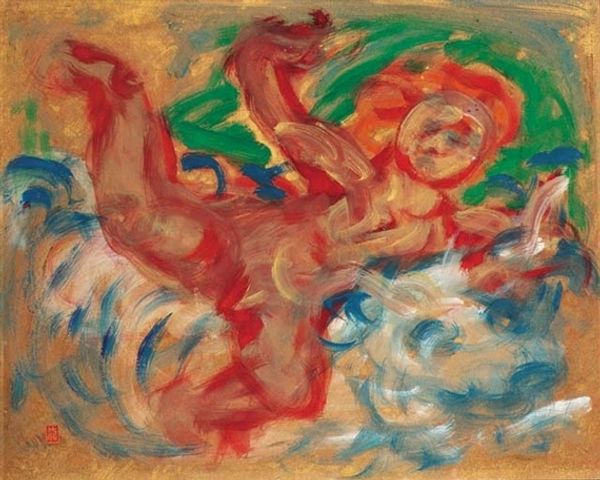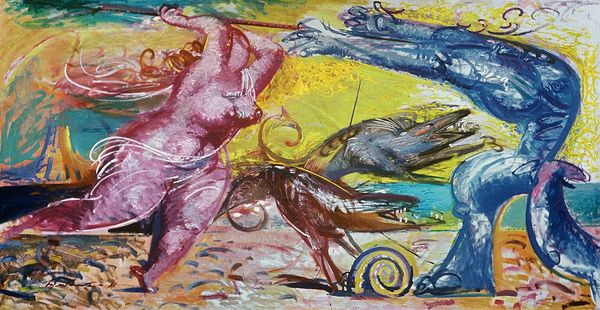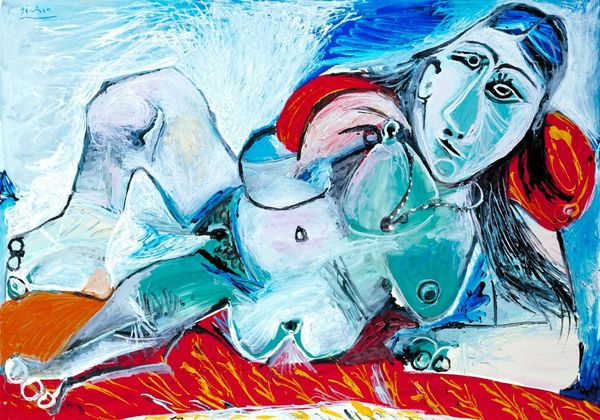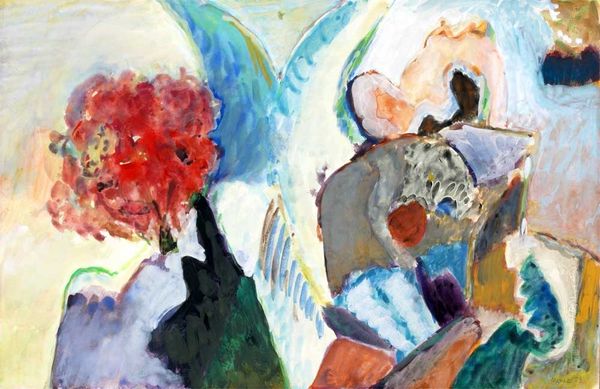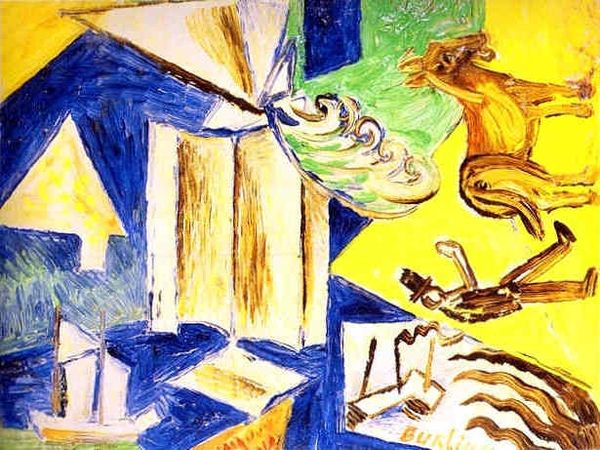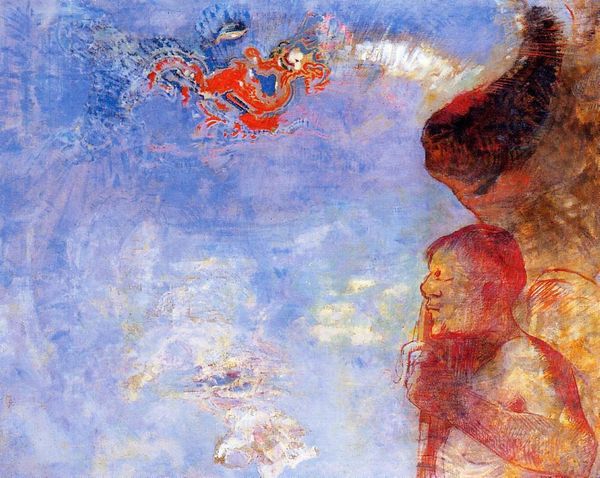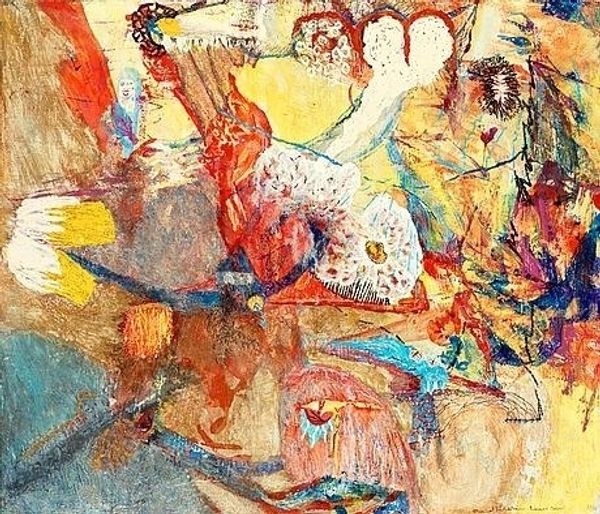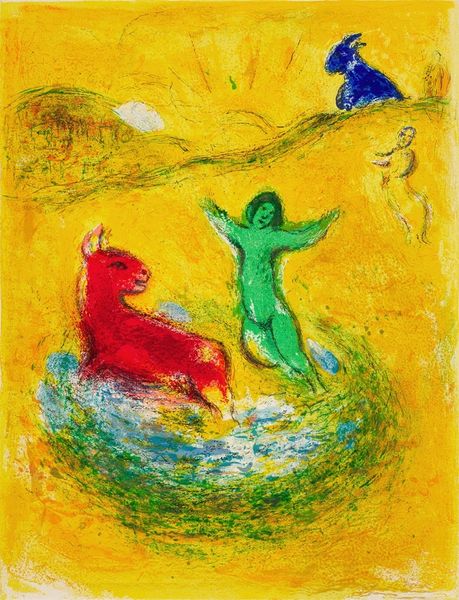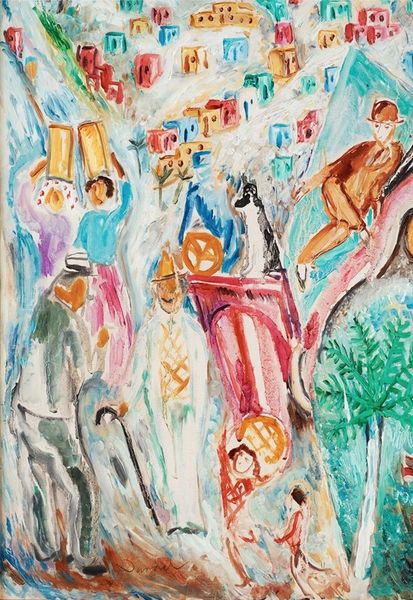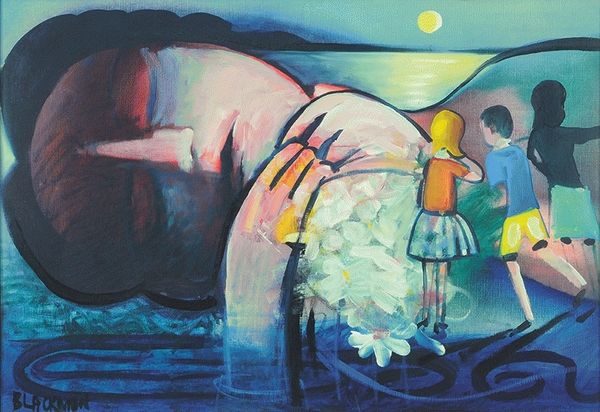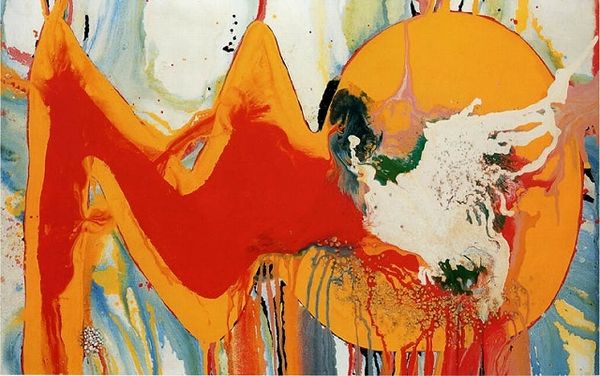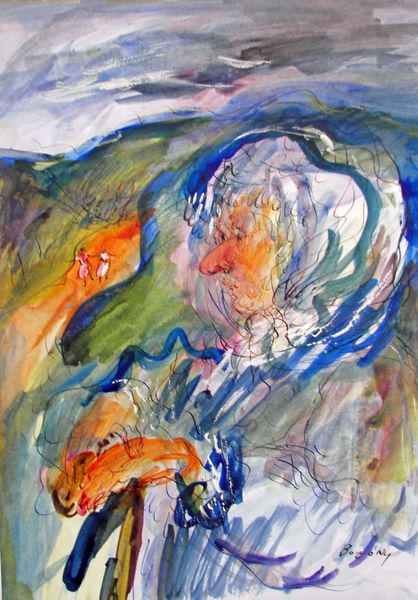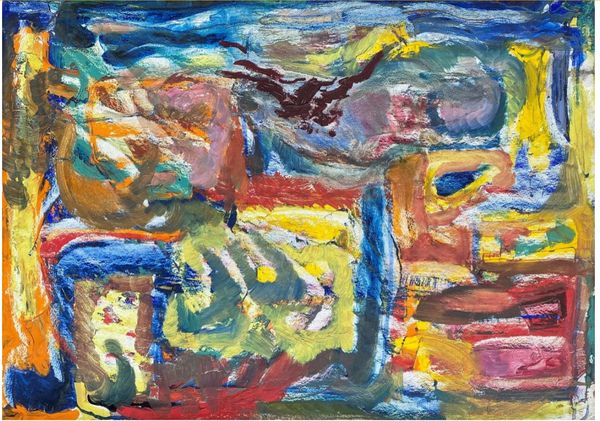
Copyright: Oleg Holosiy,Fair Use
Editor: Here we have Oleg Holosiy’s “Death of the Commander,” painted in 1991 using acrylics. The distorted figure and vibrant yellows give it an unsettling energy. How do you interpret this work? Curator: Given the year it was painted, just before the collapse of the Soviet Union, the “commander” here is less an individual and more a representation of decaying authoritarian power. The sickly yellow evokes the corruption and rot at the heart of that system. Notice the plane overhead – is that a symbol of escaping the collapsing regime or of impending external influence? What do you think? Editor: I see what you mean! I was just focused on the grotesque imagery, but the historical context makes it much richer. The plane could represent both hope and the threat of a new kind of power taking over. Curator: Exactly. Holosiy seems to be exploring that very ambivalence. And consider the style, Neo-Expressionism; its return to figuration and raw emotion can be seen as a direct challenge to the clean lines and utopian visions promoted by earlier Soviet art. Editor: That’s fascinating! It's like he’s using the visual language of the oppressor to dismantle it. Curator: Precisely! The painting doesn't just depict death, it actively participates in the dismantling of a specific ideology, asking us to be critical of all forms of power, including those that promise liberation. Editor: I never thought about it that way before, this conversation has been invaluable to consider socio-political implications behind visual imageries. Curator: Absolutely. And the conversation doesn't end here. How will you carry these ideas forward, considering the politics of images today?
Comments
No comments
Be the first to comment and join the conversation on the ultimate creative platform.
